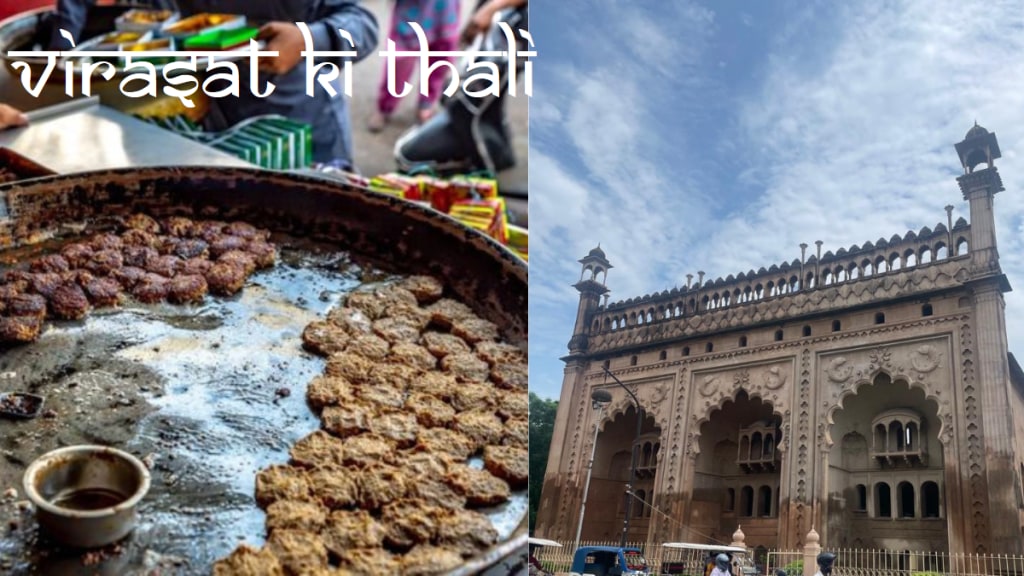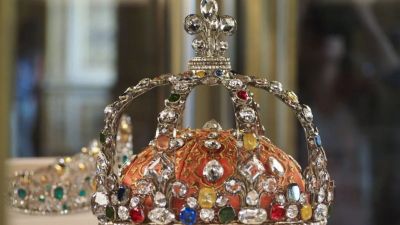Kebabo ki mehak ne janaazaa nikal diya, Biryani ke pyale ne dil ko behak diya
Welcome to this special edition of Virasat ki Thali where we will take you to the land of nawabs, or should I say land of kebabs. In the enchanting land of Lucknow, where the fragrant whispers of history linger and the essence of Nawabi elegance adorns every alley, we embarked on a culinary voyage, a food walk through the heart of this gastronomic haven. As the sun dipped beneath the horizon, painting the sky with hues of saffron and gold, we set foot in this city that boasts of kebabs so divine, they weave tales of love and longing in every bite.
This special edition takes you on a gastronomic journey through the origins of kebabs and their significance in this culturally vibrant city.
Lucknow: The Nawabi Heritage
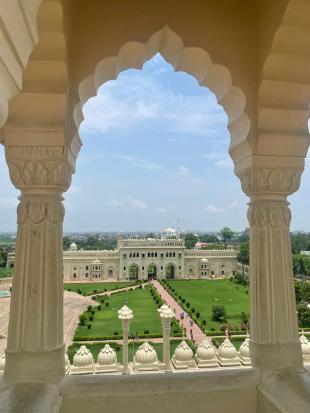
Lucknow’s history is steeped in royalty, culture, and art. The Nawabs and Shahaneh of Awadh were patrons of Iranian heritage and sought to enhance their culinary delights, leading to the refinement of the Mughlai cuisine.
The History of Kebabs
Kebabs, a delicious delicacy loved worldwide, have their roots in Turkey. Soldiers in ancient Turkey used to grill chunks of freshly hunted animals on skewers over open fires. The name “kebab” was first discovered in a Turkish script called Kyssa-i Yusuf in 1377, marking the oldest known reference to this savory dish.
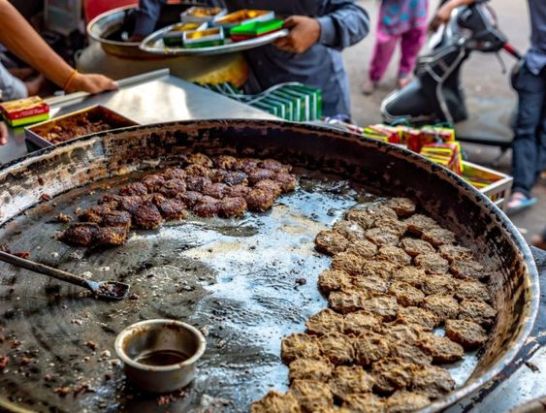
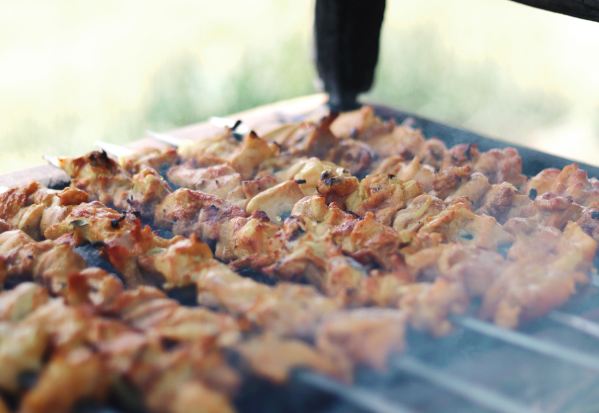
The journey of kebabs from Turkey and Russia to India was facilitated by the famous Silk Route. As kebabs arrived in India, they underwent a delightful transformation, blending with Indian flavors, spices, and cooking techniques. The result was a marriage of culinary wonders that enriched the Indian cuisine.
Origin of Tunday Kebab
Tunday Kababi, an iconic eatery renowned for its galouti kebabs, has a fascinating origin dating back to the 17th century during the reign of Nawab Asaf-ud-Daula of Awadh. At that time, kebabs were chewy and coarse in texture. Nawab Asaf-ud-Daula, a lover of food, faced a problem as he began losing his teeth with age but still wanted to enjoy kebabs. To find a solution, a contest was organized to discover the maker of the softest and most tender kebabs, promising royal patronage to the winner.
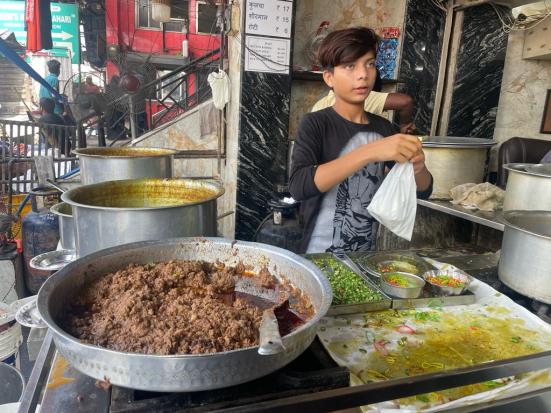
In this contest, Haji Murad Ali, who had only one arm due to a childhood accident, emerged victorious with his exceptionally tender and flavorful kebabs. Because of his disability, he was referred to as “tunday” in the local language, and thus, the kebabs he made came to be known as “Tunday ke kebabs.”
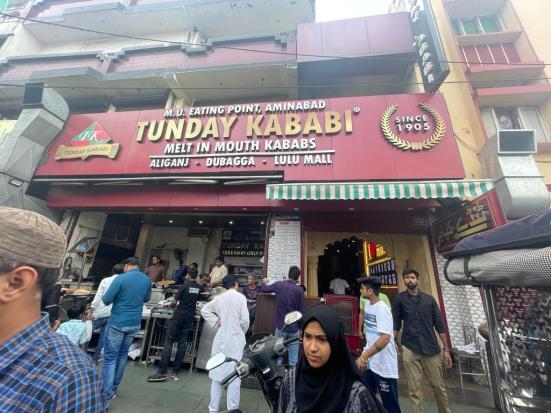
Where to eat it: Purani Luckhnow, Tunday Kebab Aminabad
Varieties of Kebabs in Lucknow
In Lucknow, kebabs hold a special place, with over 50 different recipes that cater to every palate. One unique delicacy is the “parche kebab,” where deer meat is marinated, roasted slowly, and then cooked with ghee, creating a tantalizing taste that represents the exquisite flavors of the Nawabs.
Nihari, the staple of nawabs
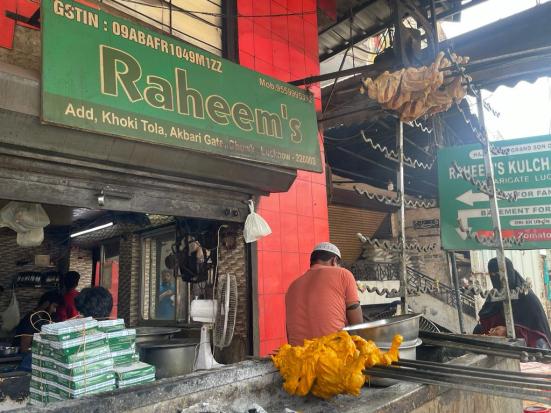
The word ‘Nihari’ finds its origin in the Arabic word “Nahar,” signifying “morning.” Initially savored by Nawabs during the Mughal Empire as a breakfast delicacy after their morning prayers (Fajr), Nihari was soon embraced by the masses and the Mughal army due to its energy-boosting properties, perfect for braving chilly Delhi mornings. A tradition emerged wherein Nihari was slow-cooked overnight for 6-8 hours in large pots to cater to the hardworking laborers involved in constructing Mughal forts and palaces. These laborers were served Nihari as their first meal of the day, offered to them free of charge. An intriguing practice can still be found in some Old Delhi restaurants, where a portion of the previous day’s leftover Nihari, known as “Taar,” is added to the next day’s pot, infusing the freshly prepared Nihari with a unique and rich spicy flavor. Some outlets in the city pride themselves on maintaining an unbroken “taar,” a tradition that has been preserved for over a century. Beyond its delectable taste, Nihari was also known to be used as a home remedy for common cold and fever by skilled hakims of the walled city.
People of Lucknow claim that the history of these dishes like Nihari go back to the days of Mahabharat. When milk, ghee and maida are mixed in equal parts, then we get gulafi kulcha. The cover on the pillow is gulaf. That’s why it’s called gulafi kulcha. There are layers that are crisp. And there are dabs inside. And when you eat it, you can feel its crispiness.
Lucknow walas just say ‘Muskurariye! aap Lucknow me hai’ and delicious food and hospitality are all you need. You won’t find a better taste than the ones you’ve had in other countries. It happens only in India.
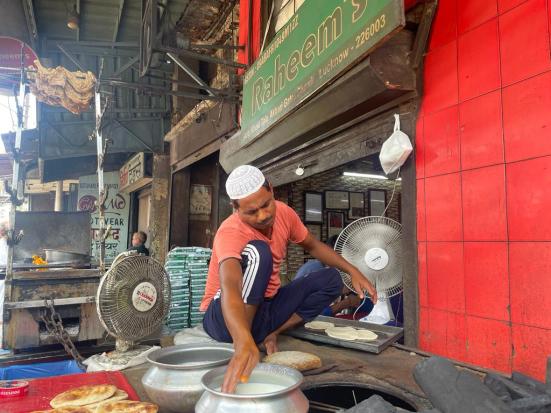
The Birth of Awadhi Biryani
The Nawabs of Awadh not only improved Mughlai cuisine but also introduced new culinary techniques. Biryani, a legendary dish, has its roots in a royal command from Queen Mumtaz Mahal. The Nawab of Awadh, Asaf-ud-Daula, entrusted his khan Samu to create this nutritious dish, resulting in the flavorful Avadhiyo Biryani, a symbol of the Nawabs’ culinary prowess.
The Iconic Lucknowi Chaat
While Lucknow is renowned for its kebabs and biryani, the city also boasts an iconic street food – the Lucknowi Chaat. This classic Indian snack derives its name from the joy it brings, leaving people licking their plates. The preparation and taste of Lucknow’s chaat are unique, reflecting the city’s rich hospitality and flavors.
Though chaat can be found all over India, each region adds its unique touch to this delectable treat. From Kanpur’s Karbar Chaat to Delhi’s Daulat Ki Chaat and Kolkata’s Churmur, the country boasts an array of tantalizing chaat variations. Yet, nothing quite hits the spot like the original Lucknowi chaat. Its taste and preparation are unparalleled, reflecting the city’s distinctive flavor and hospitality, which are as heartwarming as the dish itself.
The legend of the basket chaat dates back to 1992, attributed to a culinary innovator named Mr. Hardial. History recounts that this appetizing creation was an accidental discovery during his adventurous experiments with various recipes. The basket chaat, a culinary masterpiece, boasts around 20 meticulously chosen ingredients, each contributing to its unique and explosive taste.
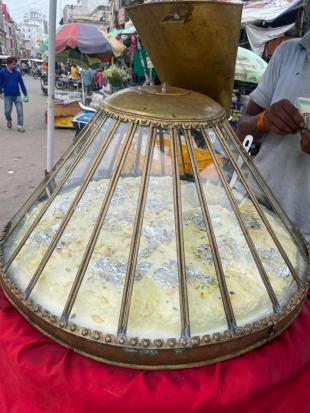
As you wander through the streets of Lucknow, you’ll find the legacy of the Nawabs still alive, not just in its magnificent buildings but also in the delectable kebabs and biryanis that have become synonymous with the city’s identity. The culinary heritage of Lucknow is a testament to the city’s love for food and its rich history, making it a paradise for food enthusiasts. So, when you visit this land of kebabs, don’t forget to savor the flavors that have been cherished for generations and discover the enchanting taste of Lucknow.
